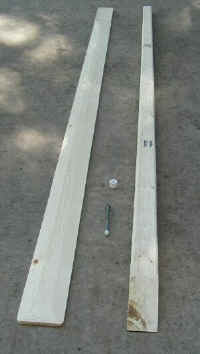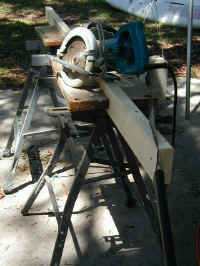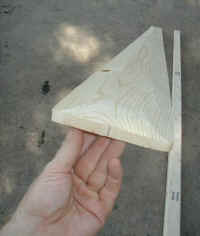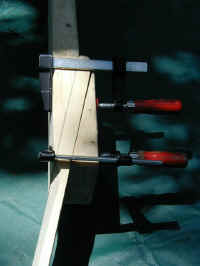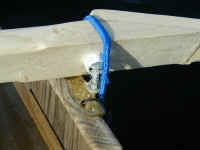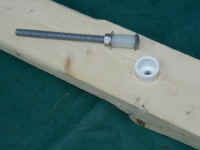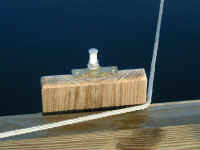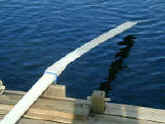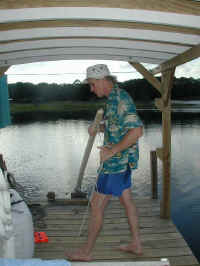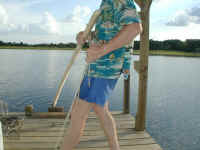The $10 Yuloh!
A cheap introduction to "scientific sculling."
| If you're like me, you think of sculling as
a kind of inferior form of rowing only to be resorted to when you've lost
an oar or are trying to maneuver in close quarters. The way I
learned to scull and the amount of time I gave to practicing, it is best
left as method of last resort. However "yulohing" has been
described as "scientific sculling" and it has remained the oar locomotion
of choice in the Orient for hundreds of years and maybe longer. Was
it only a matter of long standing tradition that kept the Chinese or
Japanese from adopting western rowing techniques once they were exposed to
them? I think not. Let me try to explain the Yuloh's advantages. For those of you who have researched outboard motor auxiliaries for sailboats you know that larger props moving at lower RPMs render more torque than smaller props at higher RPMs. This same principle can be applied to oar blades. Being bigger, the Yuloh is not capable of being moved very quickly, however the long Yuloh blade with a surface area many times that of a traditional western rowing oar displaces a lot of water as it moves. Like the western oar, the Yuloh makes use of a fulcrum and a lever, however rather than merely having your muscle and your body weight at the working end of the lever, you have a lanyard attached to the deck or bottom of the boat. This gives great assistance to the rower in counteracting the pressure of the water against the business end of the blade, which translates into forward thrust. Whether from the flex of the Yuloh blade or the snap of the lanyard at the end of the arc of the stroke (see notes below), there is power and forward thrust coming from the yuloh blade all the time it is in motion. Now this bears contemplating. Notice that when rowing there is always a coasting component to the stroke. As the oars are lifted from the water and returned to their power position, energy is being expended that is not directly applied to moving your craft. With the Yuloh this isn't the case. As you are leaning to and froe, all of your movement and body weight and strength is being translated into forward thrust. Add to the above advantages the ability to propel a craft that might be too wide to row, and the ability to face forward and see where you're going, and you can begin to understand the reasons behind its long lived popularity. |
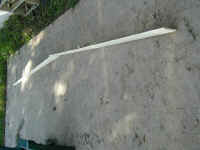 |
Testing the fit of the blade and shaft. |
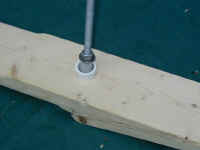 |
Here is the pin in place in the cap. |
 |
This is the cap after about an hour of sculling, and the wear is negligible. |
Return to the Yuoh Resources page.
Feel free to email me, David Beede simplicityboats
Back to Simplicity Boats Home page.
